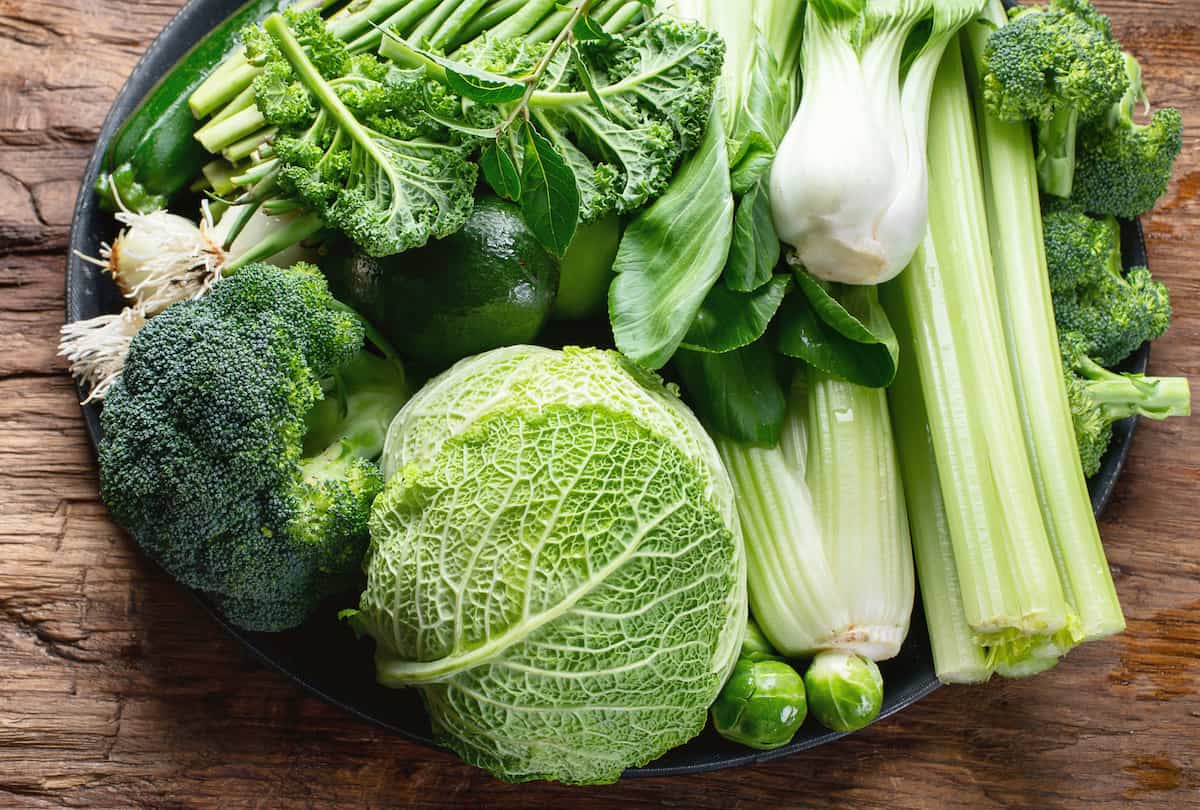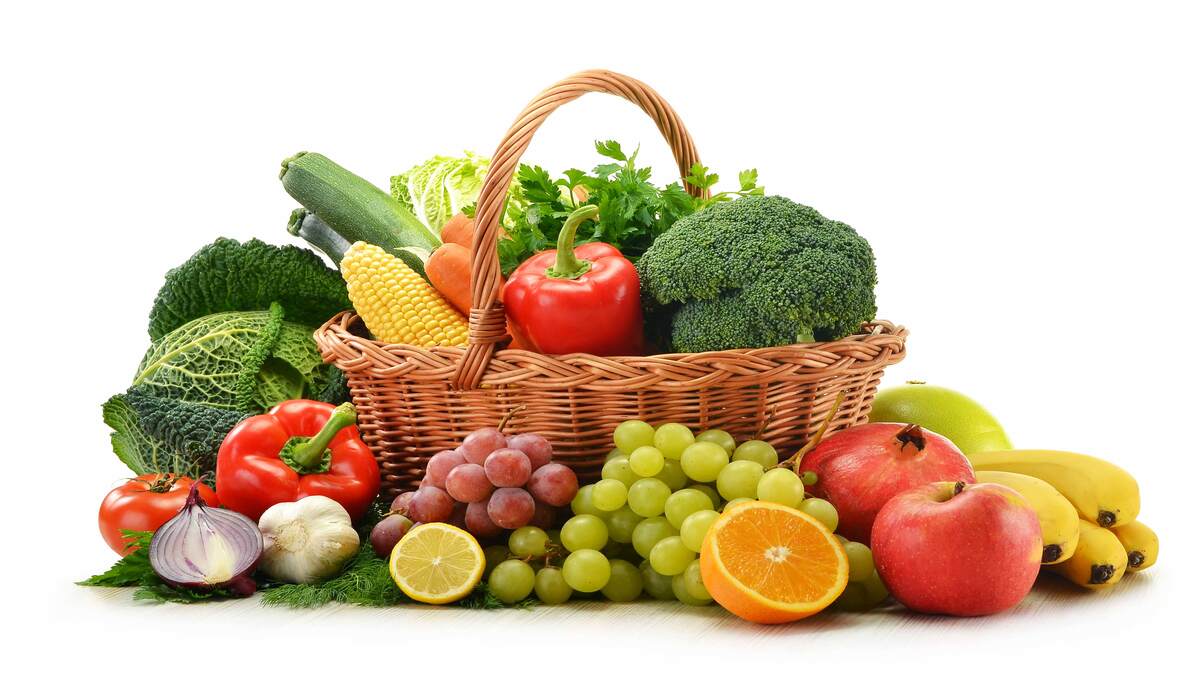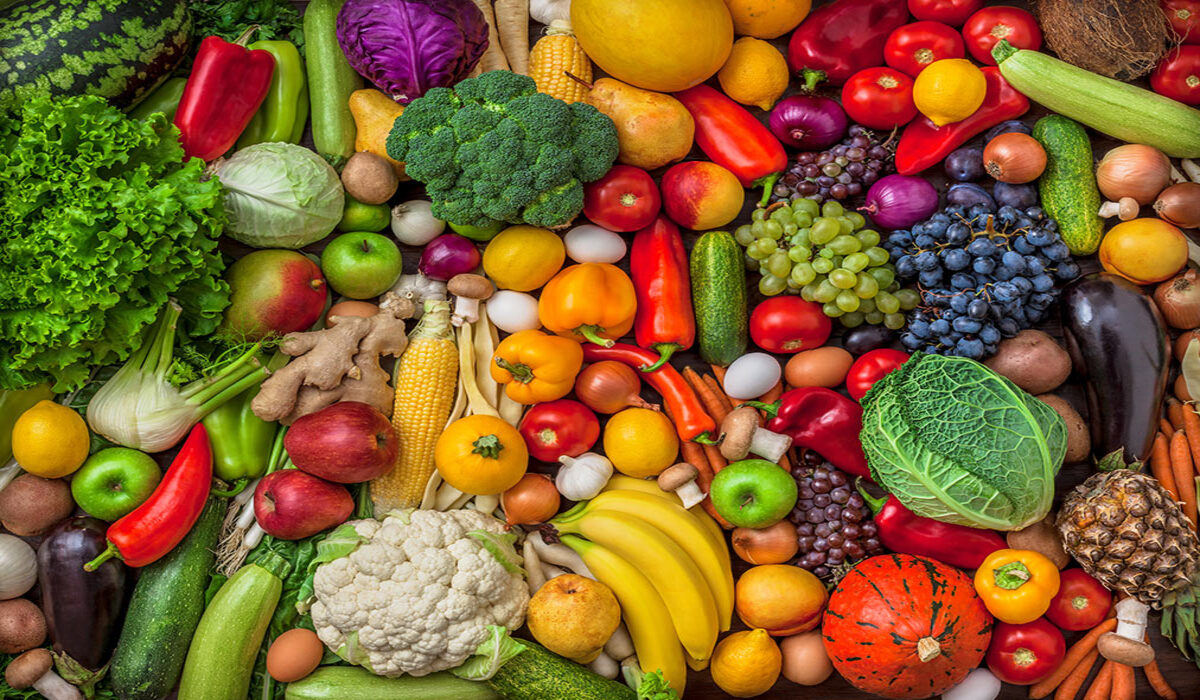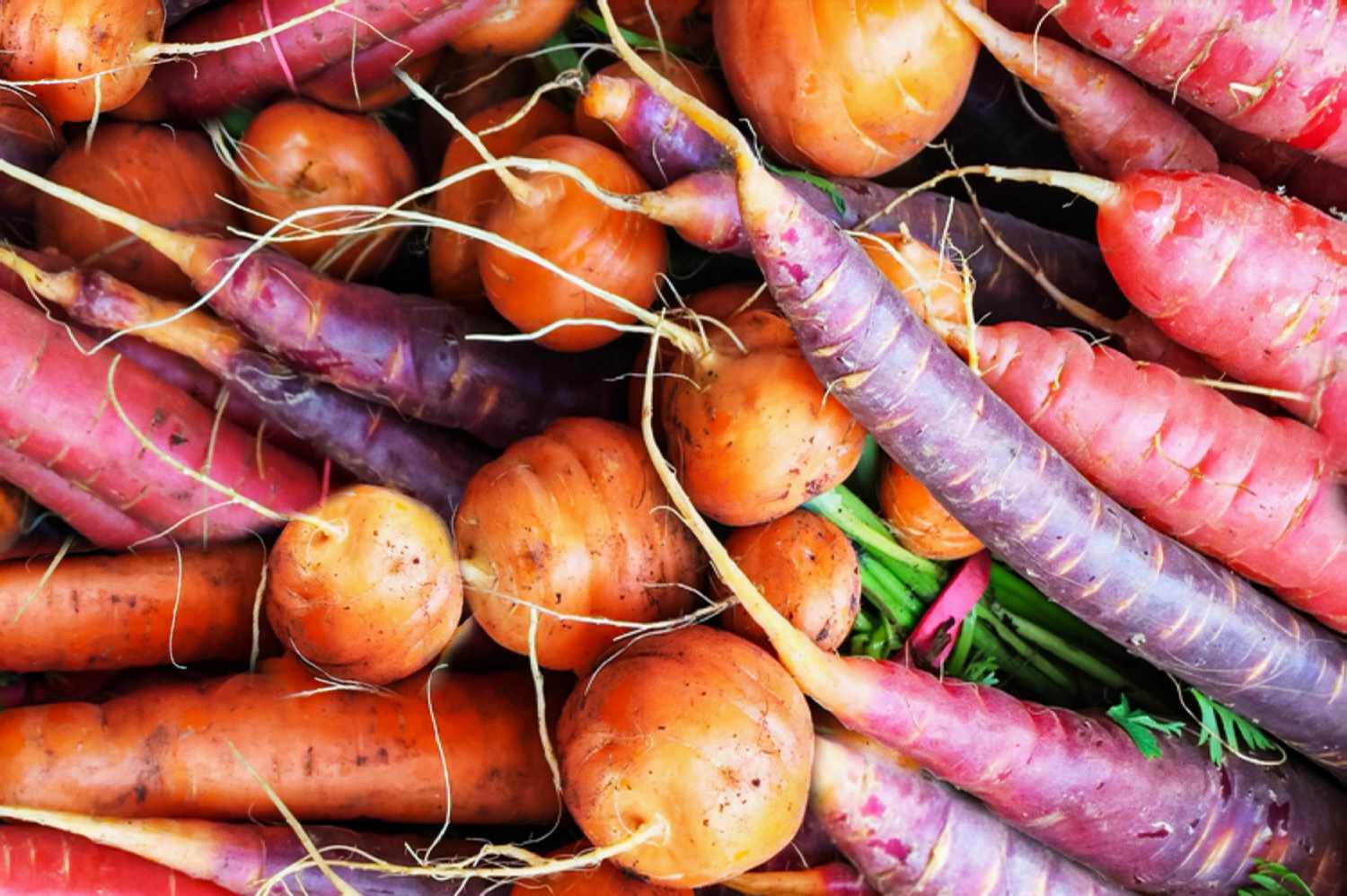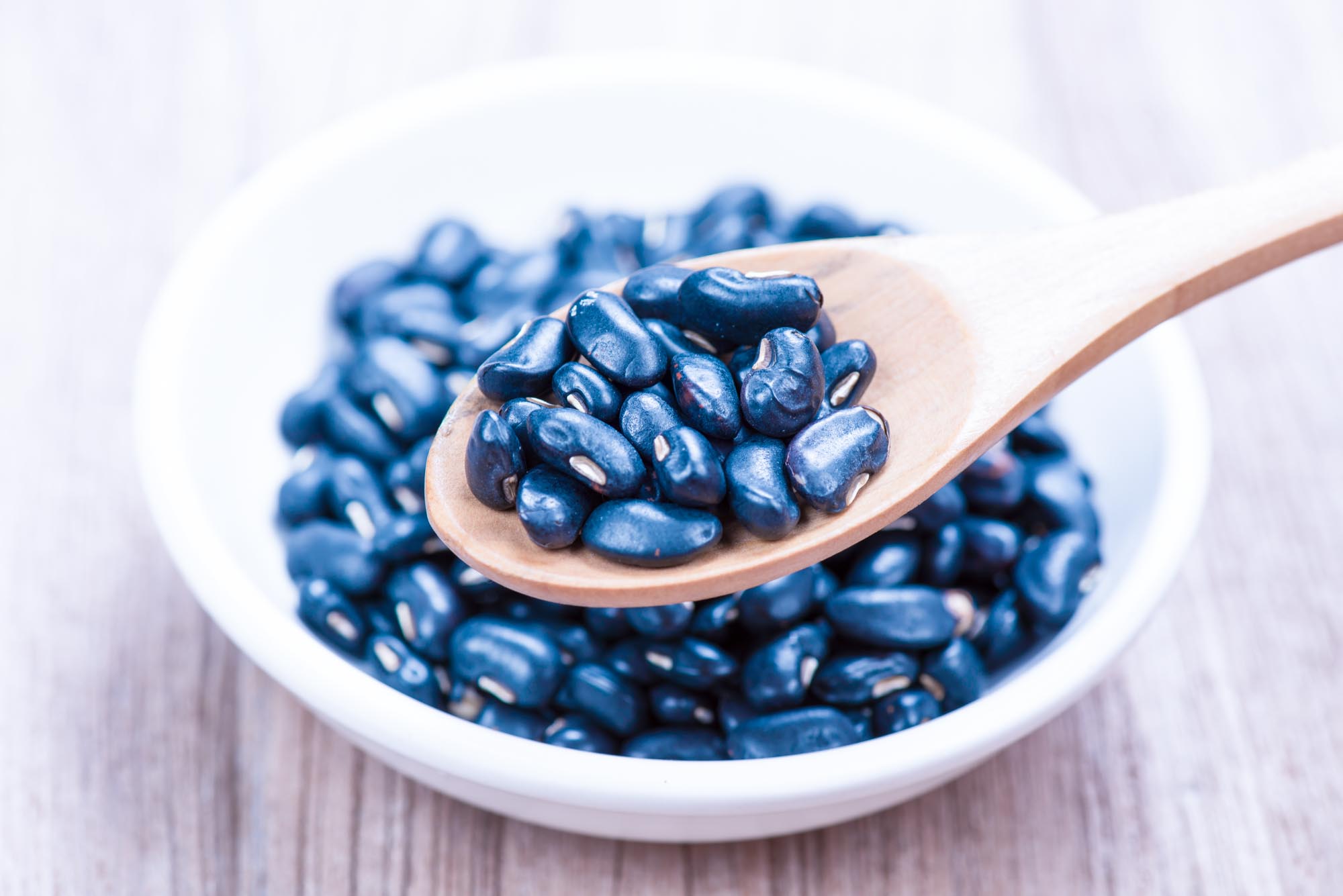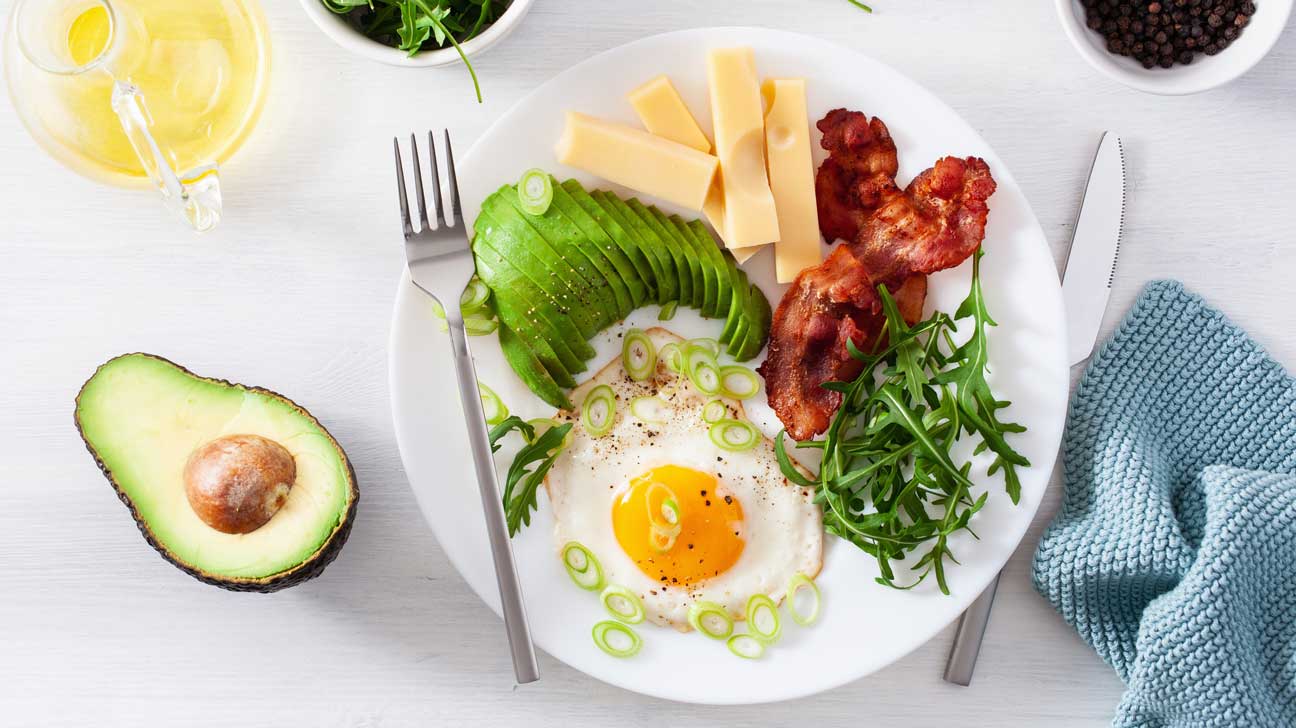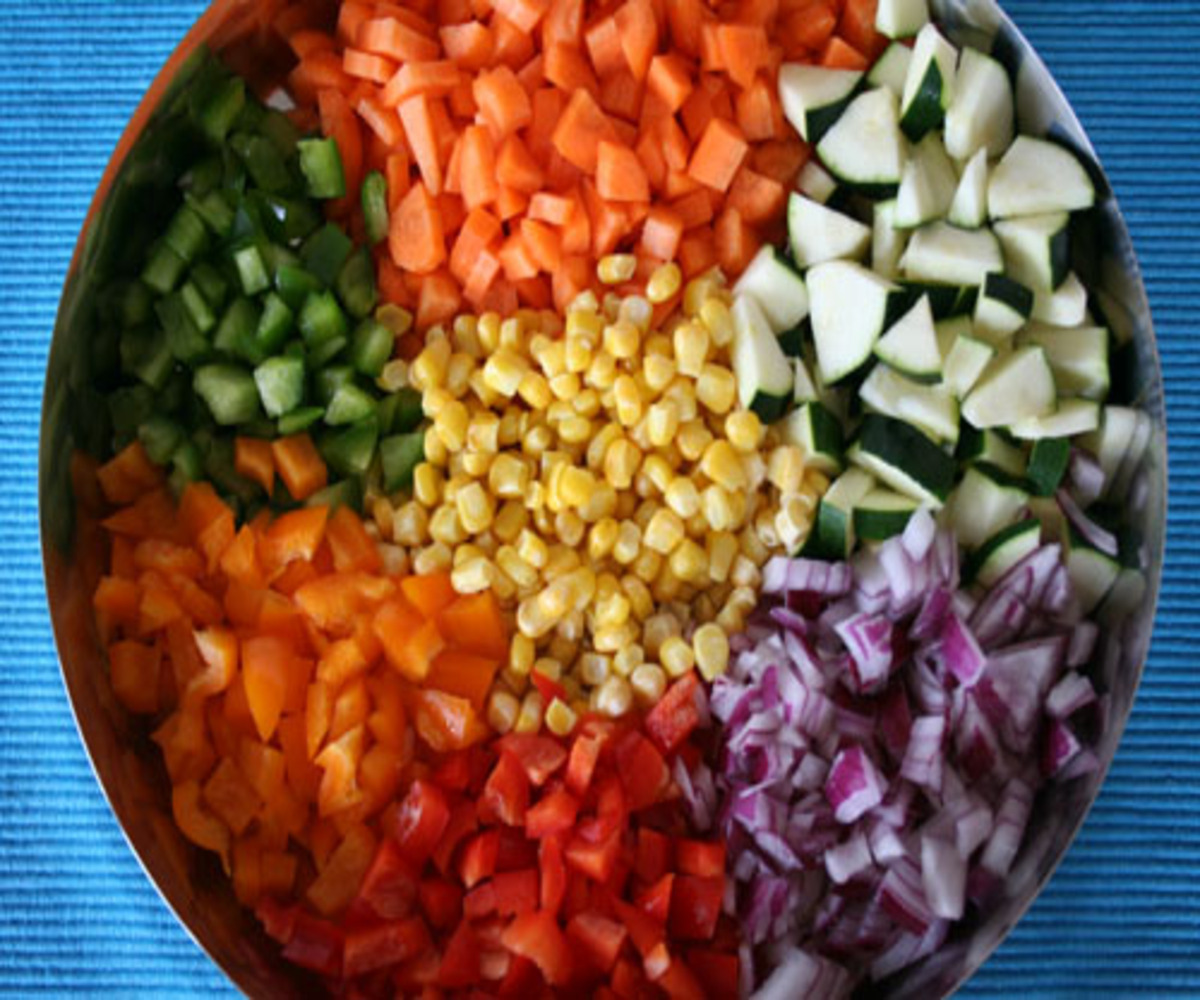Home>Types of Gardening>Edible Gardening>What Vegetables Are Flowers
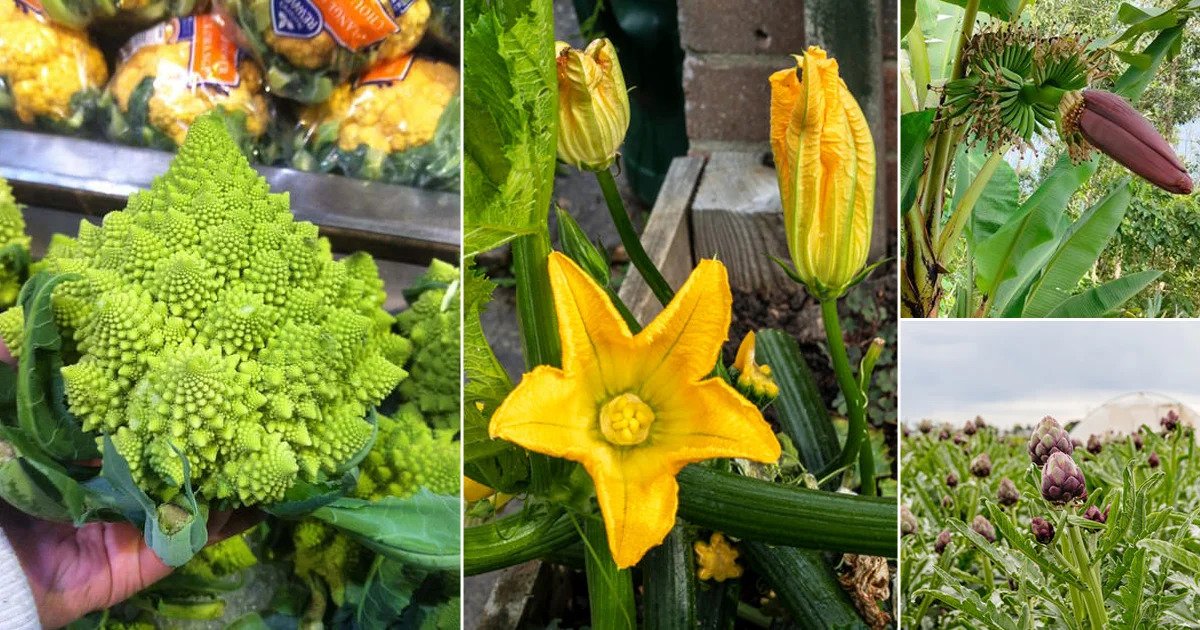

Edible Gardening
What Vegetables Are Flowers
Modified: January 22, 2024
Learn about edible gardening and discover what vegetables can actually be considered flowers. Find out which vegetables you can grow in your garden and include in your meals.
(Many of the links in this article redirect to a specific reviewed product. Your purchase of these products through affiliate links helps to generate commission for Chicagolandgardening.com, at no extra cost. Learn more)
Table of Contents
Introduction
Welcome to the wonderful world of edible gardening where flowers and vegetables come together! Have you ever wondered if vegetables can produce flowers? The answer is, yes! In fact, many vegetable plants do produce flowers, and some of these flowers are not only beautiful but also delicious and nutritious. In this article, we will explore the fascinating concept of vegetables that are also flowers and how they can add both visual appeal and culinary delight to your garden and plate.
But first, let’s define what we mean by “flowers” and “vegetables” in the context of edible gardening. Flowers are the reproductive structures of plants, typically consisting of petals, stamens, and pistils. They are often adorned with vibrant colors and delicate fragrances to attract pollinators like bees and butterflies. On the other hand, vegetables are the edible parts of plants, such as leaves, roots, stems, and fruits, that we commonly use in cooking.
Now that we understand the basics, let’s dive into the world of vegetable plants that produce flowers. These plants not only provide us with delicious vegetables but also grace us with the beauty of their blossoms. Some of the most popular examples include:
- Broccoli: Known for its delicious florets, broccoli plants also produce small yellow flowers when left to mature.
- Zucchini: This summer squash plant produces large yellow flowers that are not only attractive but also a delicacy when stuffed or used in fritters.
- Tomatoes: While tomatoes are technically fruits, they are commonly considered as vegetables in culinary contexts. Tomato plants produce delicate yellow flowers that eventually transform into the juicy red fruits we love.
- Beans: Both pole beans and bush beans produce charming white, pink, or purple flowers that later give way to pods with tasty edible beans.
- Squash: Similar to zucchini, different varieties of squash plants, such as butternut squash and acorn squash, produce beautiful and vibrant flowers.
Now that we know about vegetable plants that can double as flowers, let’s explore some popular edible flowers that can be a delightful addition to your garden and your plate. Stay tuned!
Definition of Flowers and Vegetables
Before delving deeper into the world of edible gardening, it’s essential to understand the definitions of flowers and vegetables in the context of this article. This will help us appreciate the unique relationship between these two components of the plant kingdom.
Flowers are the reproductive structures found in flowering plants. They typically consist of petals, stamens, and pistils. These colorful and often fragrant structures serve a vital purpose in the plant’s life cycle by attracting pollinators such as bees, butterflies, and even birds. Without flowers, the process of pollination would not occur, leading to the inability of plants to reproduce.
On the other hand, vegetables are the edible parts of plants that humans consume. While many people associate vegetables with leaves, roots, and stems, it’s important to note that some vegetables can also come from other parts of the plant, such as fruits or flowers.
Traditionally, flowers were not widely recognized as a source of food. However, as people began to experiment with different edible plants, they discovered that certain flowers offer not only visual appeal but also a range of flavors and nutritional benefits. This led to the emergence of the concept of edible flowers – flowers that can be safely consumed and incorporated into various dishes.
Nowadays, the classification of certain plant parts as flowers or vegetables can blur, as some plants can have edible flowers that are also classified as vegetables. For example, broccoli plants produce both edible florets and small yellow flowers. And while tomatoes are technically fruits, they are commonly referred to as a vegetable due to their culinary usage. Tomato plants bear flowers that eventually develop into the juicy, vitamin-rich fruits known for their versatility in cooking.
Understanding the definitions of flowers and vegetables allows us to appreciate the fascinating overlap between these two components of the plant kingdom. This overlap is what makes edible gardening even more intriguing, as it enables us to enjoy the visual beauty of flowers while reaping the rewards of flavorful and nutritious vegetables.
Vegetable Plants That Produce Flowers
It might come as a surprise, but many vegetable plants actually produce beautiful flowers in addition to the edible parts that we commonly consume. These flowers not only enhance the visual appeal of the plants but also have the potential to add unique flavors and textures to our meals. Let’s explore some of these vegetable plants that delight us with their blossoms:
- Broccoli: Broccoli is renowned for its nutritious florets, but if you allow the broccoli plant to continue its growth, it will produce small, edible yellow flowers that are not only visually appealing but also offer a mild and slightly sweet taste.
- Zucchini: The zucchini plant is a prolific producer, not just of the familiar green vegetable but also of large and vibrant yellow flowers. These flowers are not only eye-catching but also possess a delicate and slightly sweet flavor. They can be stuffed, battered, and fried for a delightful treat.
- Tomatoes: Tomatoes, often considered vegetables in cooking, are technically fruits. However, tomato plants deserve mention due to their charming yellow flowers. These flowers eventually develop into the juicy and tangy fruits we adore. Tomato flowers can also bring a mildly floral note when incorporated into certain dishes.
- Beans: Both pole beans and bush beans produce lovely and often fragrant flowers. These flowers come in various colors, including white, pink, and purple. As the flowers fade, they give way to pods that contain delicious edible beans. Bean flowers are not only visually appealing but can also lend a subtle floral taste to dishes.
- Squash: Different varieties of squash, such as butternut squash and acorn squash, also produce stunning and vibrant flowers. These flowers can be orange, yellow, or even white, and they add an aesthetic touch to any garden. Squash flowers are not only beautiful but can also be harvested and used in culinary creations.
These are just a few examples of vegetable plants that surprise us with their delightful flowers. Each of these flowers adds a unique visual and gastronomic element to our gardening and cooking experiences, showcasing the incredible diversity and versatility of plants.
Popular Edible Flowers
When it comes to edible gardening, it’s not just vegetable plants that offer beautiful and tasty blooms. There is a whole world of edible flowers that can elevate your culinary creations with their vibrant colors, delicate flavors, and delightful fragrance. Let’s take a look at some popular edible flowers that you can consider growing in your own garden:
- Nasturtium: Nasturtium flowers are known for their vibrant hues of orange, yellow, and red. These flowers have a peppery flavor, reminiscent of watercress, which adds a unique zing to salads and savory dishes.
- Calendula: Calendula flowers have bright yellow or orange petals and a slightly tangy and floral taste. They can be used as a colorful addition to salads, soups, and even desserts.
- Borage: Borage flowers are a stunning blue color and have a subtle cucumber-like taste. They can be used to garnish cocktails, salads, and desserts, or frozen into ice cubes for a refreshing twist.
- Lavender: Lavender flowers are not only visually appealing but also have a delightful aroma and a subtle floral flavor. They can be used in baking, infused into syrups or teas, or sprinkled over salads for a touch of elegance.
- Chive blossoms: Chive blossoms are small purple flowers that pack a punch of onion-like flavor. They can be used as a garnish for soups, salads, or omelets, adding both visual appeal and a subtle onion kick.
- Rose: Rose petals have a delicate and aromatic flavor, making them a perfect addition to desserts, teas, and even savory dishes. They can be used fresh, dried, or even turned into rosewater for various culinary purposes.
These are just a few examples of popular edible flowers, but there are many more out there waiting to be discovered. When using edible flowers, it’s important to ensure that they have been grown organically and are free from pesticides and chemicals. Also, taste a small portion of a new flower before incorporating it into your recipes to ensure it suits your palate.
By incorporating these edible flowers into your cooking, you not only enhance the visual appeal of your dishes but also add layers of flavor and aromatic complexity. Experiment with these blossoms and let your culinary creativity blossom alongside your garden!
Nutritional Benefits of Vegetables and Flowers
When it comes to edible gardening, the benefits extend beyond just the visual and culinary delights. Vegetables and flowers alike offer a wide array of essential nutrients that contribute to a healthy and balanced diet. Let’s explore the nutritional benefits of incorporating vegetables and edible flowers into your meals:
Vegetables:
Vegetables are known for their abundance of vitamins, minerals, and antioxidants, making them an essential part of a nutritious diet. Here are some key nutritional benefits of vegetables:
- Rich in vitamins and minerals: Vegetables are excellent sources of vitamins A, C, and K, as well as minerals like potassium and folate. These nutrients support various bodily functions and help maintain overall health.
- Dietary fiber: Many vegetables are high in dietary fiber, which aids digestion, promotes bowel regularity, and helps control blood sugar levels.
- Low in calories: Most vegetables are low in calories, making them a great choice for weight management and maintaining a healthy body weight.
- Antioxidants: Vegetables are packed with antioxidants that help protect the body against harmful free radicals, reducing the risk of chronic diseases such as heart disease and certain types of cancer.
Edible Flowers:
Edible flowers not only offer beauty and flavor but also provide some unique nutritional benefits. Here are a few reasons to include edible flowers in your diet:
- Phytochemicals: Edible flowers contain various phytochemicals, which are natural compounds that have been shown to have antioxidant and anti-inflammatory properties.
- Vitamins and minerals: Similar to vegetables, edible flowers can provide vitamins and minerals, depending on the specific flower. For example, calendula flowers are rich in vitamins A and C, while rose petals offer vitamin E.
- Flavonoids: Many edible flowers, such as lavender and chamomile, are rich in flavonoids, which have been associated with numerous health benefits, including reduced inflammation and improved heart health.
- Aromatherapy benefits: The aroma of certain edible flowers, like lavender, can have a calming effect and aid in relaxation, promoting mental well-being.
By including a variety of vegetables and edible flowers in your meals, you can ensure that you are getting a wide range of essential nutrients to support your overall health and well-being.
Culinary Uses of Edible Flowers
Edible flowers are not just a feast for the eyes; they also offer a range of exciting culinary possibilities. They can bring a pop of color, add unique flavors, and elevate the presentation of your dishes. Let’s explore some creative and delicious ways to incorporate edible flowers into your culinary creations:
Garnish:
One of the simplest ways to use edible flowers is as a garnish. Place a few blooms on top of salads, soups, or main dishes to give them an eye-catching and decorative touch. Not only will the flowers add visual appeal, but they can also provide a subtle taste that complements the dish.
Sweet treats:
Add a touch of elegance to your desserts with edible flowers. Use them to decorate cakes, cupcakes, or pastries. Consider crystallizing the flowers by brushing them with egg white and coating them with sugar for a stunning and edible embellishment.
Infused drinks and syrups:
Infuse your favorite beverages with the delicate flavors and aromas of edible flowers. Add flowers like lavender or chamomile to hot water for a calming and aromatic tea. You can also create floral syrups by boiling a mixture of sugar, water, and edible flowers. Use the syrup to sweeten your teas, lemonades, cocktails, or drizzle it over desserts for a burst of floral sweetness.
Salads and savory dishes:
Edible flowers can brighten up salads and bring both visual appeal and flavor. Toss a handful of petals into green salads or grain bowls for a vibrant touch. You can also lightly sauté flowers like squash blossoms or add them to stir-fries, risottos, or pasta dishes to impart a subtle yet delightful taste.
Herb-like flavorings:
Some edible flowers, such as chive blossoms or borage flowers, carry distinct herb-like flavors. Use them as a unique alternative to traditional herbs. Chive blossoms can be snipped up and added to omelets, salads, or cream-based sauces for a mild onion kick. Borage flowers can be used as a decorative garnish or added to drinks and salads to bring a subtle cucumber-like taste.
When using edible flowers, it’s important to remember a few guidelines. Always make sure that the flowers you use are safe to consume and have not been treated with chemicals. If you’re unsure about the safety of a particular flower, consult a reputable source or expert before using it in your cooking. Additionally, use flowers in moderation and be mindful of any potential allergies or sensitivities.
Get creative in the kitchen and experiment with different edible flowers. They can turn an ordinary dish into a stunning culinary masterpiece, delighting both your taste buds and your visual senses.
How to Grow Edible Flowers at Home
Growing edible flowers at home allows you to have a fresh and convenient supply of these beautiful and tasty blooms right at your fingertips. Whether you have a large garden or a small balcony, here are some steps to help you successfully grow edible flowers:
1. Choose the right location:
Find a suitable location that receives at least 6 hours of sunlight per day. Most edible flowers thrive in full sun but can tolerate partial shade in some cases.
2. Prepare the soil:
Ensure that the soil is well-draining and rich in organic matter. Amend the soil with compost or well-rotted manure to provide essential nutrients for healthy flower growth.
3. Select the right flowers:
Research and choose edible flowers that are well-suited for your climate and growing conditions. Some popular options include pansies, marigolds, violets, and nasturtiums. Make sure to purchase seeds or seedlings from reputable sources.
4. Start from seeds or transplants:
You can start growing edible flowers from seeds directly in the garden or start with transplants to save time. Follow the instructions on the seed packet or transplant label for planting depth and spacing.
5. Provide proper care:
Regularly water your edible flowers, ensuring that the soil remains consistently moist but not waterlogged. Mulch around the plants to conserve moisture and suppress weed growth. Fertilize as needed with a balanced organic fertilizer to promote healthy growth and blooming.
6. Control pests and diseases:
Monitor your plants for any signs of pests or diseases and take appropriate measures to control them. Use organic pest control methods such as handpicking insects or using natural insecticidal soaps or neem oil if necessary.
7. Harvesting:
Harvest your edible flowers when they are fully open but before they start to wilt. Gently remove the flowers from the plants, being careful not to damage the stems or surrounding foliage. Rinse the flowers with water to remove any dirt or insects before using them in your culinary creations.
8. Enjoy eating and sharing:
Eat and share the fruits of your labor by incorporating the freshly harvested edible flowers into your meals. Get creative and experiment with various recipes and dishes to fully appreciate the flavors and visual appeal of these delightful blooms.
Remember to research the specific needs of the edible flowers you choose to grow, as different varieties may have slightly different cultivation requirements. With proper care and attention, you can enjoy a bountiful harvest of edible flowers right from your own garden.
Conclusion
Edible gardening opens up a world of possibilities where flowers and vegetables coexist harmoniously. We’ve explored the concept of vegetables that produce flowers, such as broccoli, zucchini, and tomatoes, adding not just flavor and nutrition but also beauty to our plates. Additionally, we’ve discovered a range of popular edible flowers, from the peppery nasturtium to the tangy calendula, which bring vibrant colors and unique flavors to our culinary creations.
Not only do vegetables and edible flowers offer visual appeal and delicious tastes, but they also come packed with essential nutrients and health benefits. Vegetables provide vital vitamins, minerals, and fiber, while edible flowers offer antioxidants and phytochemicals that promote overall well-being.
With some creativity, edible flowers can be incorporated into various culinary uses, whether as a simple garnish, a sweet treat decoration, for infusing drinks, enhancing salads and savory dishes, or adding herb-like flavors to your recipes.
By growing edible flowers at home, you have the opportunity to experience the joys of tending to a garden and enjoying the rewards of nurturing your plants. Whether you have a small space or a sprawling yard, you can cultivate a selection of edible flowers that suit your taste and growing conditions.
Remember to choose the right location, prepare the soil, select suitable flowers, provide proper care, control pests and diseases, and harvest your flowers at the right time. And most importantly, savor the experience of incorporating these fresh and flavorful blooms into your meals.
Embrace the beauty and deliciousness of the edible gardening world, and let your imagination run wild with the countless possibilities. Explore the vast range of vegetables and flowers available, and enjoy the remarkable combination of flavors, colors, and textures that can enhance your gardening and culinary journey.
